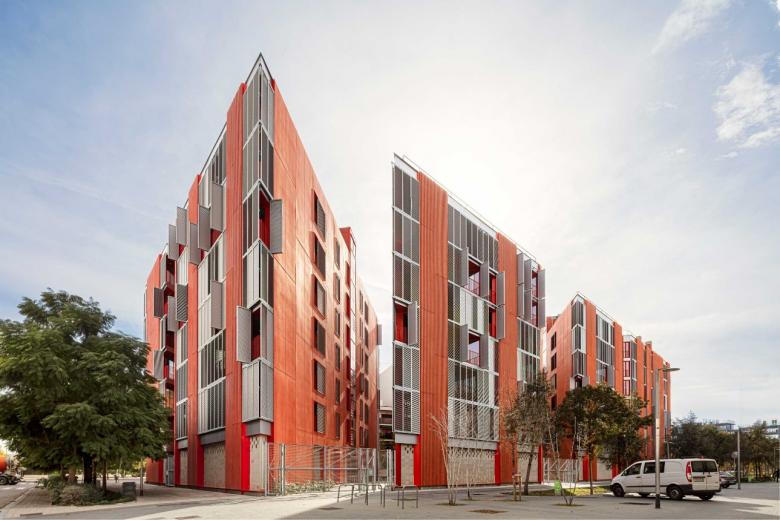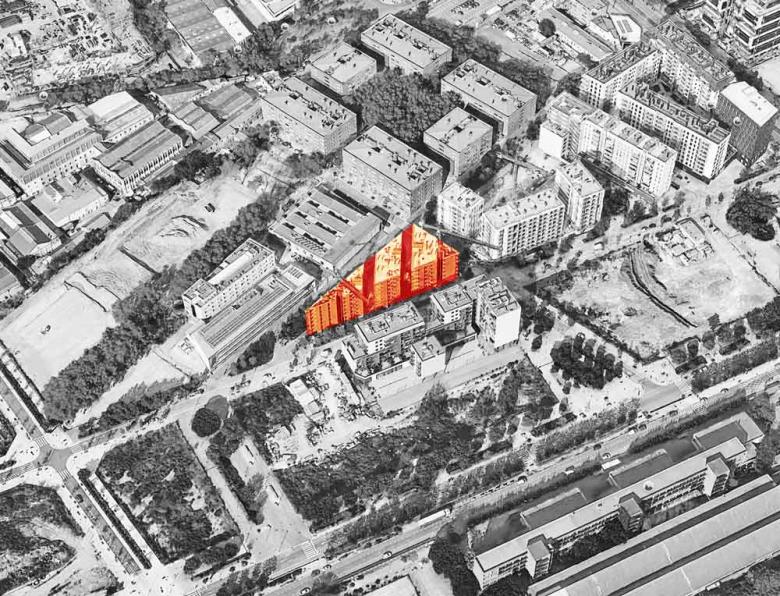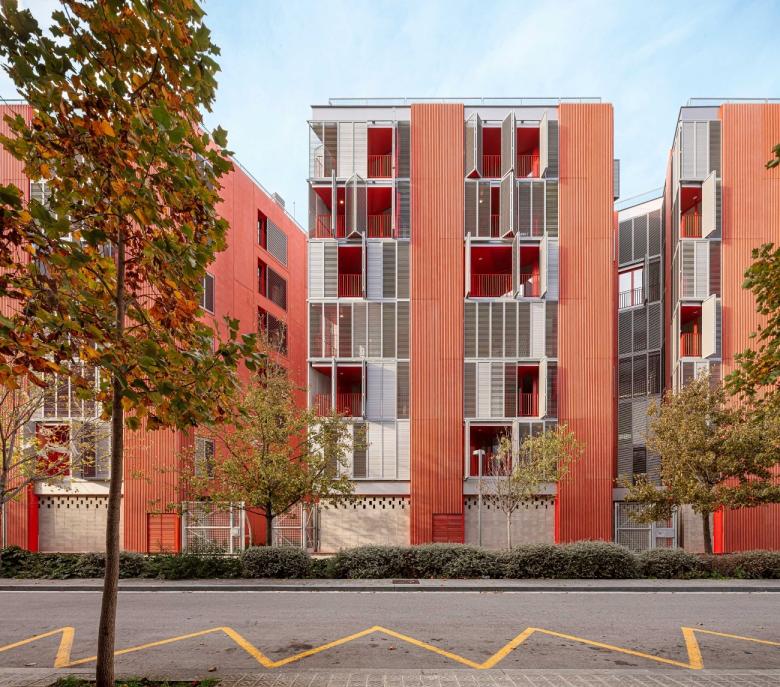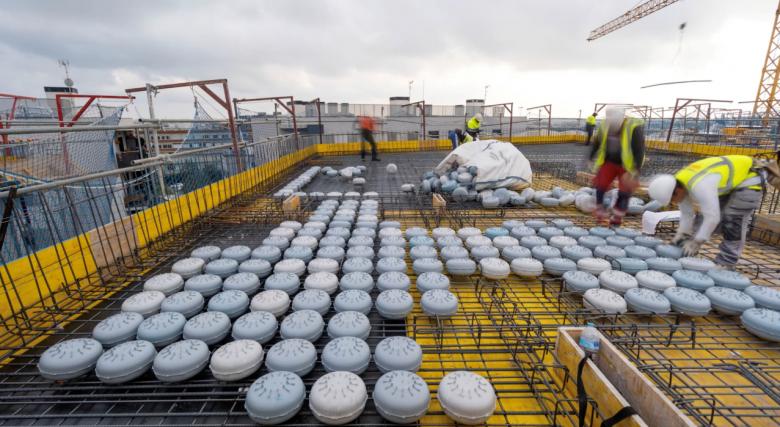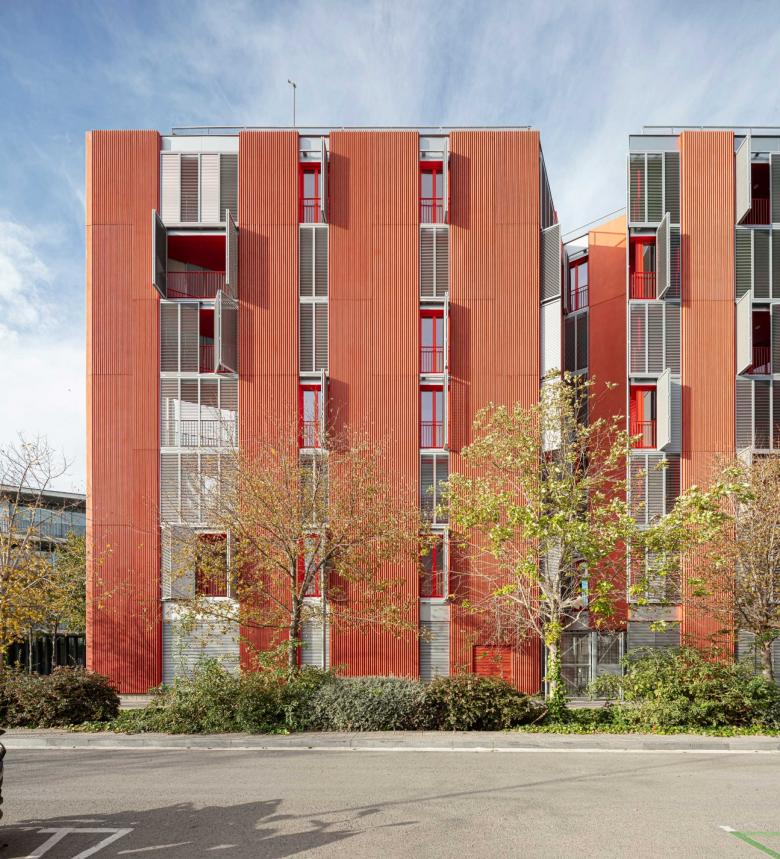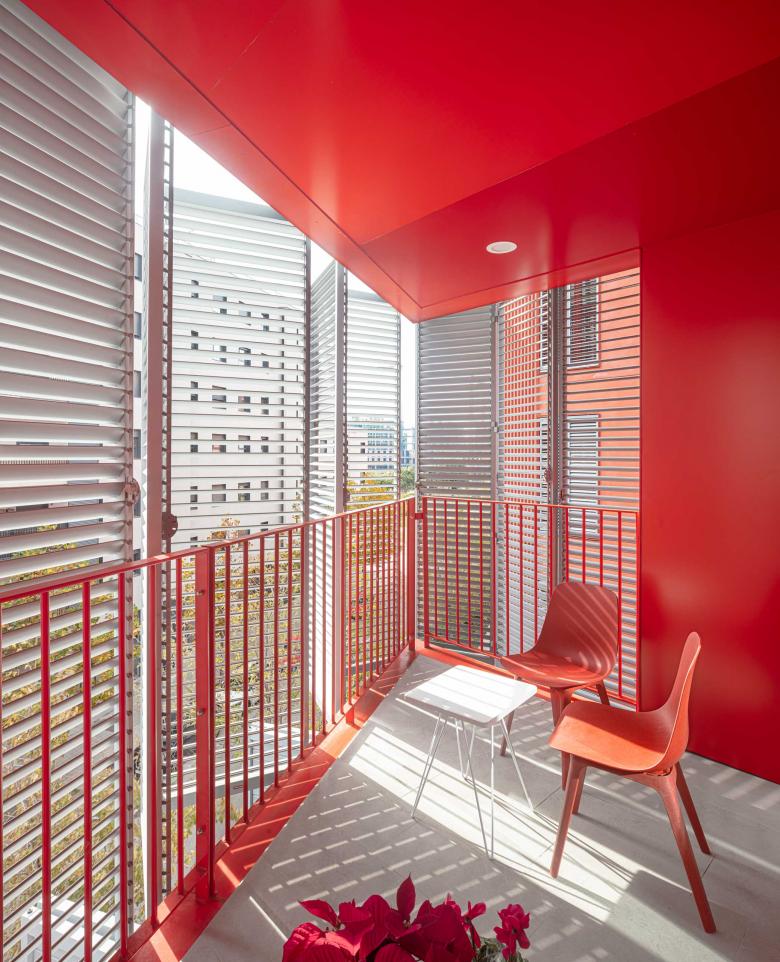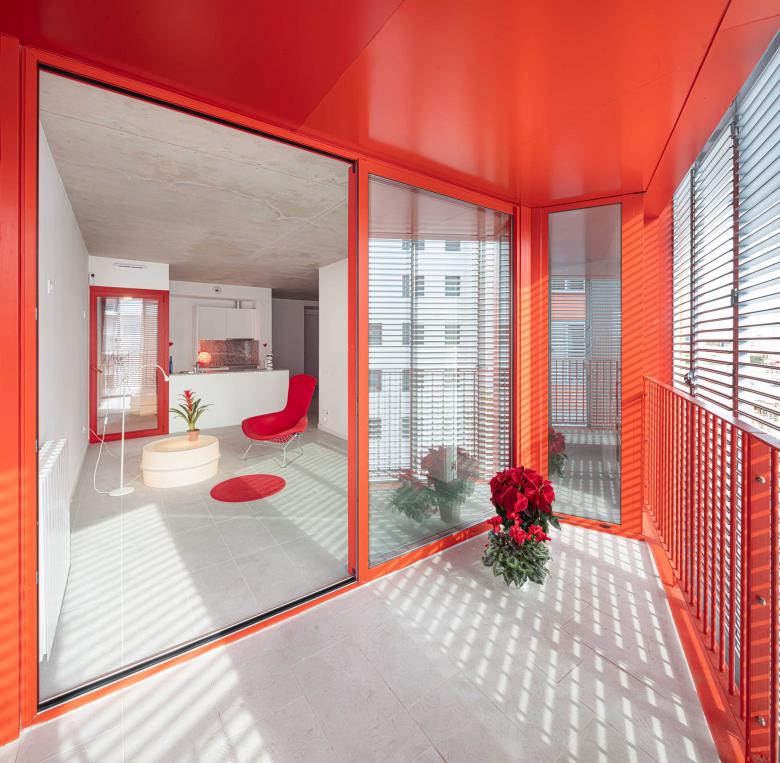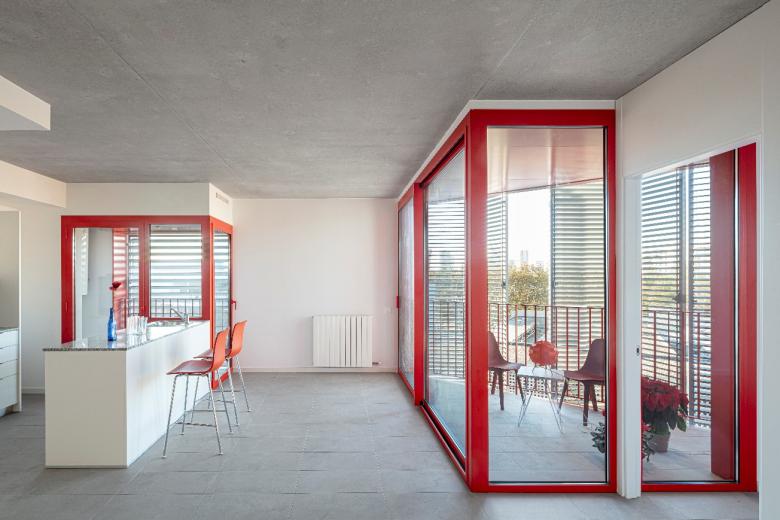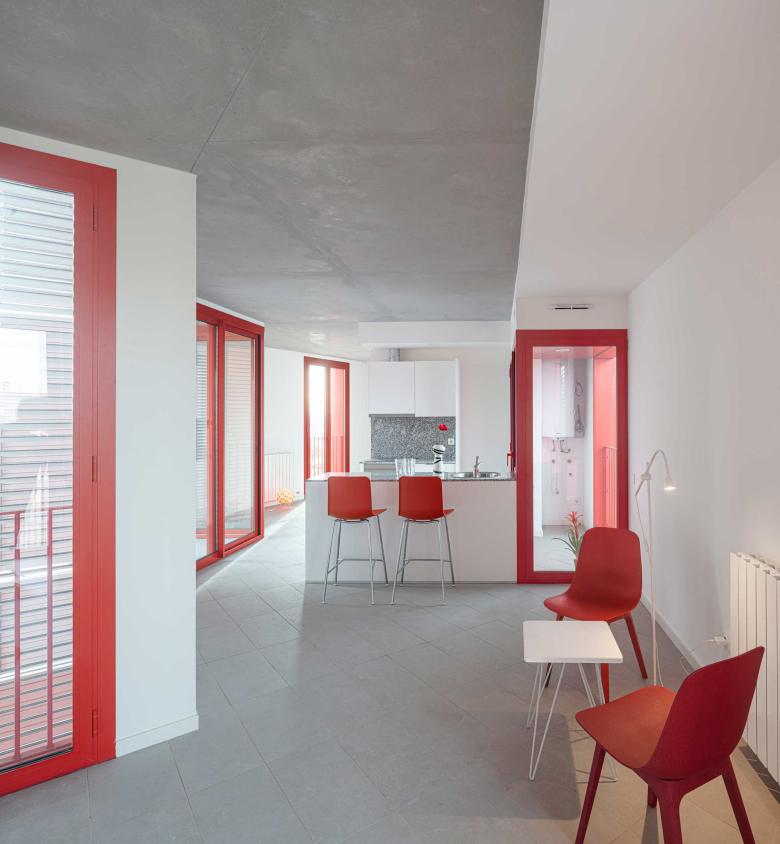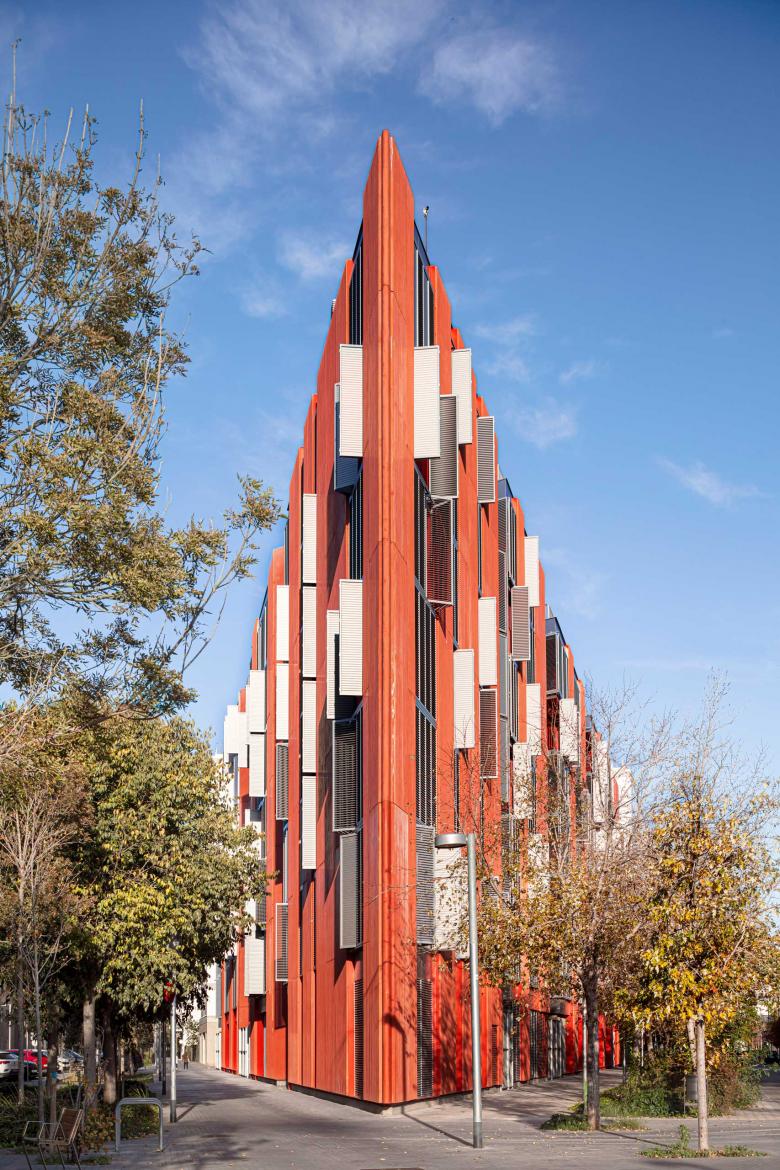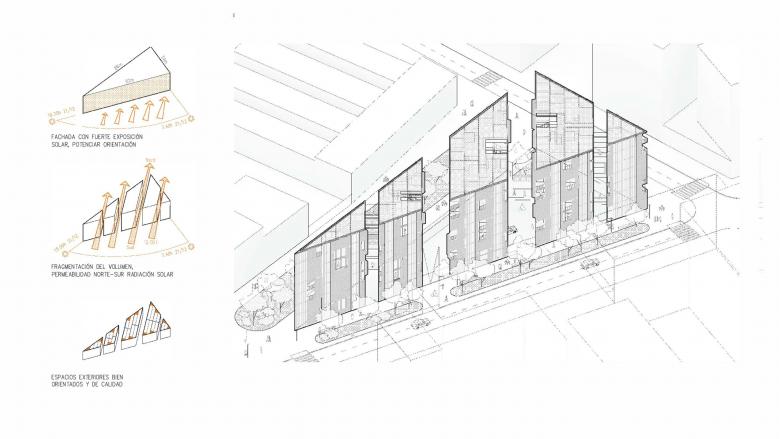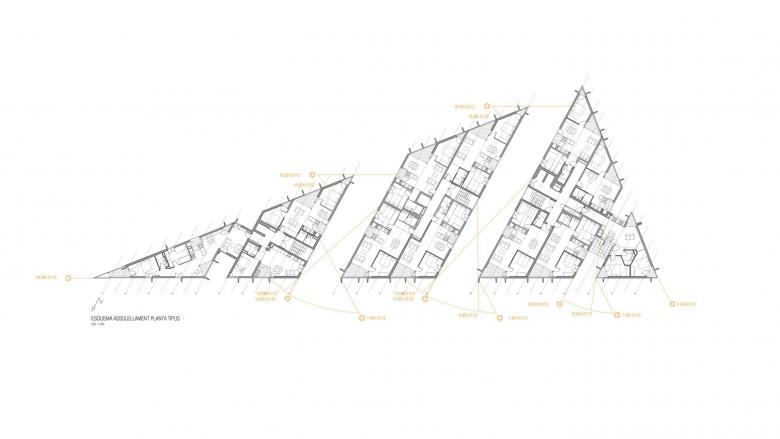World Building of the Week
72 Social Housing Units at the Marina del Prat Vermell
Ana María Álvarez, MIAS Architects + Coll-Leclerc
15. April 2024
Photo: Adrià Goula
The Marina del Prat Vermell in Barcelona is preparing for a future of significant change with the ambitious transformation of its surroundings, spearheaded by visionary projects such as the one designed by MIAS Architects and Coll-Leclerc. This project, located on a triangular site at the confluence of three streets, defies conventional limits with a form that captures attention from afar.
The design of the building, consisting of 72 social rental units distributed across six floors above a ground floor dedicated to equipment, met the geometric challenge of the site with determination and creativity. By embracing the triangular shape of the site, the team chose to enhance its uniqueness rather than avoid it. One of the most prominent decisions was the opening of two north-south streets within the plot to create three trapezoidal pieces in which to organize the dwellings, which end up having the appearance of single-family houses. This arrangement, together with the search for rectangular and 90-degree interior spaces, resulted in a facade that absorbs the irregularities of the triangle through habitable terraces. Thus, the whole is a balance between form and function.
The design responds to the triangular shape of the site and stands as a new landmark in the area. (Image: MIAS Architects + Coll-Leclerc)
Photo: Adrià Goula
In addition to its plan, the building is distinguished by its red facade, a tribute to the history of the Marina del Prat Vermell (the Red Meadow Marina) and to the old textiles that dried in the sun and dyed the ground in reddish tones. This nod to local identity, combined with pioneering construction techniques such as the use of recycled plastic bubbles in the floor slabs and GRC (glass-reinforced concrete) panels on the facades, positions the project as an architectural landmark in the revitalization of the area.
Plastic bubbles were used in the construction of the floor slabs. (Photo: MIAS Architects + Coll-Leclerc)
Photo: Adrià Goula
Attention to detail extends to the interior of the homes, where abundant natural light and panoramic views provide welcoming and comfortable environments. Common spaces, such as passageways and decks, promote interaction and community among residents, while cross ventilation and maximum solar exposure ensure optimal living conditions.
Photo: Adrià Goula
Photo: Adrià Goula
The architectural design of the project has been carefully planned to optimize energy efficiency throughout the year and achieve NZEB (Nearly Zero-Emission Building) certification. The layout of the openings, the use of solar shading with adjustable louvers, and a ventilated facade contribute to reducing energy consumption, while durable and recyclable materials ensure a low environmental impact.
As a result of these measures, total energy consumption is significantly reduced to 8.76 kWh/m2 per year, giving it an outstanding A rating and meeting stringent Passivhaus standards. In addition, heating and cooling demands are kept at very low levels, thus contributing to a comfortable and sustainable indoor environment.
Photo: Adrià Goula
Photo: Adrià Goula
The collaboration between MIAS Architects and Coll-Leclerc has resulted in a building that goes beyond the conventional — defying expectations and opening up new possibilities in Barcelona's architectural landscape. With its focus on innovation, sustainability, and cultural rootedness, this project represents a milestone in the urban transformation of the city.
Photo: Adrià Goula
Location: Barcelona, Spain
Client: IMHAB Municipal Institute of Housing and Renovation of Barcelona
Architects: MIAS Architects + Coll-Leclerc
Collaborators: Carla Blanch, Marc Subirana, Mar Genovés, Manuel Giró, Mauro Soro, Maria Chiara Ziliani, Marta Casas, Anna Massana
Floor Area: 7,670 m2
Drawing: MIAS Architects + Coll-Leclerc
Drawing: MIAS Architects + Coll-Leclerc
This review was first published as “Un triángulo rojo de Miàs Architects y Coll-Leclerc en Barcelona” on Spanish-Architects. English translation edited by John Hill.
